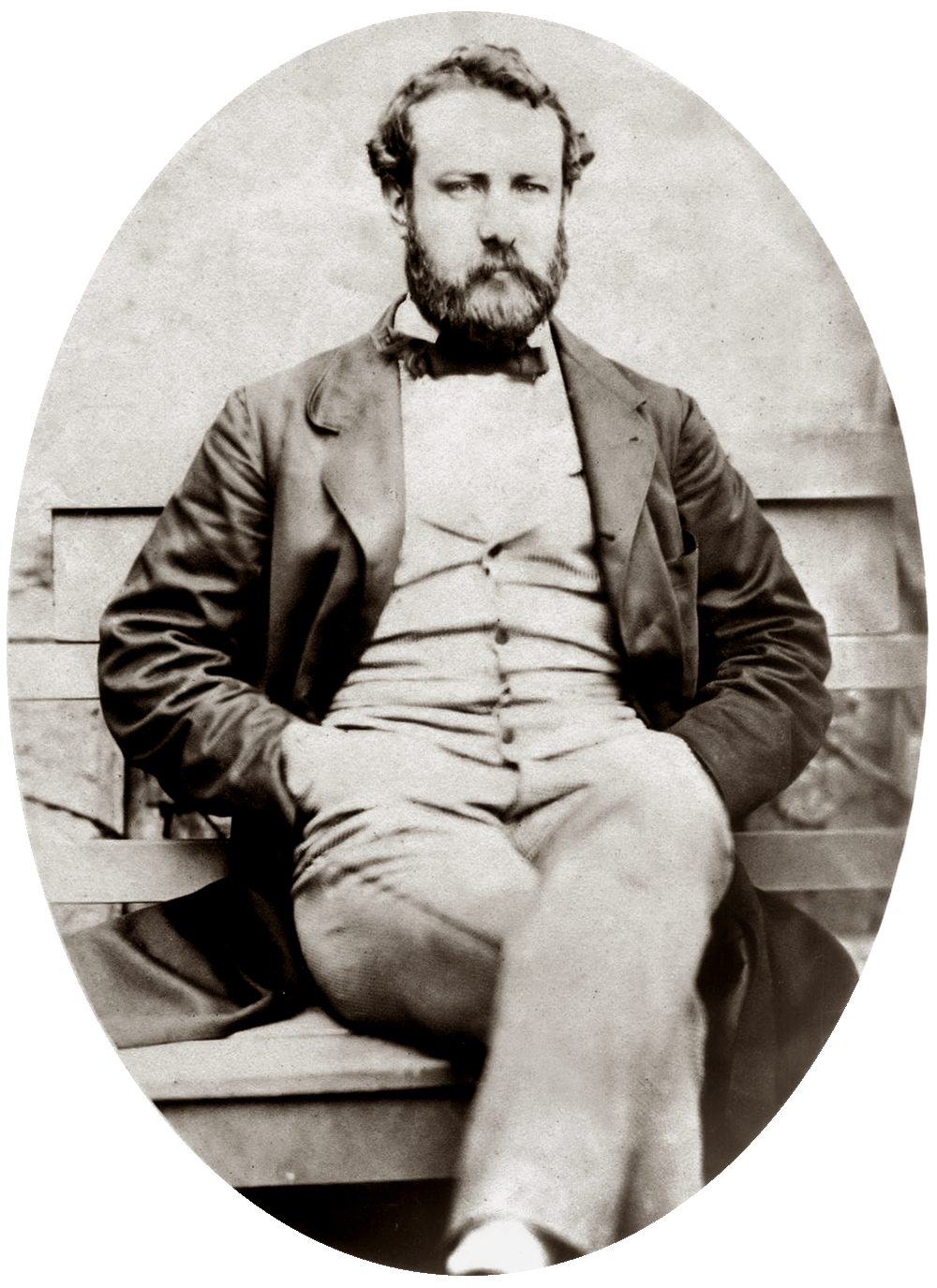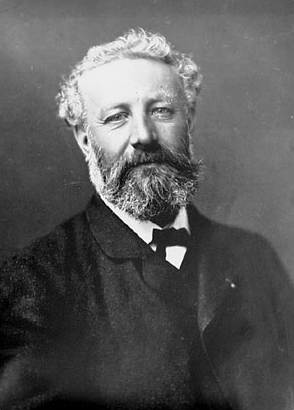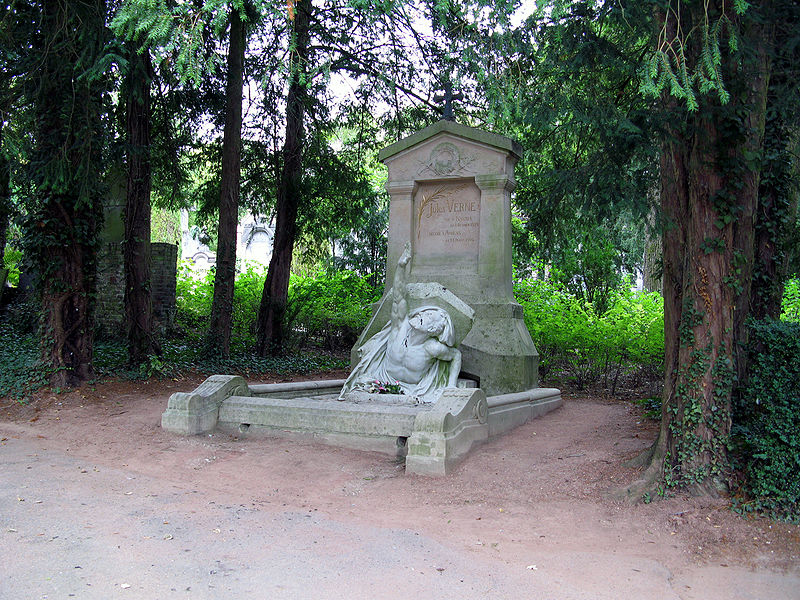<Back to Index>
- Chemist Dmitri Ivanovich Mendeleyev, 1834
- Author Jules Gabriel Verne, 1828
- Prince of Vladimir Yaroslav II, 1191


Jules Gabriel Verne (8 February 1828 – 24 March 1905) was a French author who helped pioneer the science-fiction genre. He is best known for his novels A Journey to the Centre of the Earth (1864), From the Earth to the Moon (1865), Twenty Thousand Leagues under the Sea (1869–1870), Around the World in Eighty Days (1873) and The Mysterious Island (1875). Verne wrote about space, air, and underwater travel
before navigable aircraft and practical submarines were invented, and
before any means of space travel had been devised. Consequently he is
often referred to as the "Father of science fiction", along with H. G. Wells. Verne is the second most translated author of all time, only behind Agatha Christie, with 4223 translations, according to Index Translationum. Some of his works have been made into films.
He was born in the bustling harbor city of Nantes in
Western France. The oldest of five children, he spent his early years
at home with his parents. The family spent summers in a country house
just outside the city, on the banks of the Loire River. Verne and his brother Paul, of whom Verne was very fond, would often rent a boat for a franc a day. The sight of the many ships navigating the river sparked Verne's imagination. When Verne was nine, he and Paul were sent to boarding school at the Saint Donatien College (Petit séminaire de Saint-Donatien). As a child, he developed a great interest in travel and exploration, a passion he showed as a writer of adventure stories and science fiction. At twelve, he snuck onto a ship that was bound for India, the Coralie, only to be caught and severely whipped by his father. He famously stated, "I shall from now on only travel in my imagination." After completing his studies at the lycée, Verne went to Paris to study law. About 1848, in conjunction with Michel Carré, he began writing librettos for operettas. For some years his attentions were divided between
the theatre and work, but some travelers' stories which he wrote for the Musée des Familles revealed to him his talent for writing fiction. When
Verne's father discovered that his son was writing rather than studying
law, he promptly withdrew his financial support. Verne was forced to
support himself as a stockbroker, which he hated despite being somewhat successful at it. During this period, he met Alexandre Dumas, père, and Victor Hugo, who offered him writing advice. Dumas would become a close friend of Verne. Verne also met Honorine de Viane Morel,
a widow with two daughters. They were married on 10 January 1857. With
her encouragement, he continued to write and actively looked for a
publisher. On 3 August 1861, their son, Michel Jean Verne, was born. A classic enfant terrible, Michel was sent to Mettray Penal Colony in
1876 and later married an actress, had
two children by his 16-year-old mistress, and buried himself in debts. Verne's situation improved when he met Pierre-Jules Hetzel, one of the most important French publishers of the 19th century, who also published Victor Hugo, George Sand, and Erckmann-Chatrian,
among others. They formed an excellent writer-publisher team until
Hetzel's death. Hetzel helped improve Verne's writings. In 1864, Verne wrote an admiring study of the works of Edgar Allan Poe (Edgar Poe et ses oeuvres, 1864) and it is not difficult to see Poe's works, published in France as Histoires extraordinaires (Extraordinary Stories), as a source of inspiration for Verne. In
fact, Verne was so intrigued by Poe's "The Narrative of Arthur Gordon
Pym of Nantucket" that he penned a sequel to the work entitled "An
Antarctic Mystery." From that point to years after Verne's death, Hetzel published two or more volumes a year. The most successful of these include: Voyage au centre de la terre (Journey to the Centre of the Earth, 1864); De la terre à la lune (From the Earth to the Moon, 1865); Vingt mille lieues sous les mers (Twenty Thousand Leagues under the Sea, 1869); and Le tour du monde en quatre-vingts jours (Around the World in Eighty Days), which first appeared in Le Temps in
1872. The series is collectively known as "Les voyages extraordinaires"
("extraordinary voyages"). Verne could now live on his writings. But
most of his wealth came from the stage adaptations of Le tour du monde en quatre-vingts jours (1874) and Michel Strogoff (1876), a relatively conventional adventure tale set in Tsarist Russia, which he adapted for the stage with Adolphe d'Ennery. In 1867 Verne bought a small ship, theSaint-Michel, which he successively replaced with the Saint-Michel II and the Saint-Michel III as his financial situation improved. On board the Saint-Michel III, he sailed around Europe. In 1870, he was appointed "Chevalier" (Knight) of the Légion d'honneur. After his first novel, most of his stories were first serialised in the Magazine d'Éducation et de Récréation, a Hetzel biweekly publication, before being published in
the form of books. Jules' brother Paul contributed to a non-fiction
story "Fortieth Ascent of Mont Blanc" ("Quarantième ascension du
Mont-Blanc") to the collection of short stories, Doctor Ox (1874). According to the Unesco Index Translationum, Jules Verne regularly places among the top five most translated authors in the world. After
the deaths of Hetzel and his beloved mother in 1887, Verne began
writing darker works. This may have been due partly to changes in his
personality, but an important factor was that Hetzel's son, who took
over his father's business, was not as rigorous in his edits and
corrections as Hetzel Sr. had been. In 1888, Verne entered politics and was elected town councilor of Amiens, where he championed several improvements and served for fifteen years. Though elected from the left he stood with the right on Dreyfus Affair and was anti-Dreyfusard, although the theme of wrongful conviction and judicial corruption found in "The Kip Brothers", one of his last novels, suggests he may have become a Dreyfusard later in life. In 1905, ill with diabetes,
Verne died at his home, 44 Boulevard Longueville (now Boulevard
Jules-Verne). His son Michel oversaw publication of his last novels Invasion of the Sea and The Lighthouse at the End of the World.
The "Voyages extraordinaires" series continued for several years
afterwards in the same rhythm of two volumes a year. It was later
discovered that Michel Verne had made extensive changes in these
stories, and the original versions were published at the end of the
20th century. In 1863, Verne wrote Paris in the 20th Century, a novel about a young man who lives in a world of glass skyscrapers, high-speed trains, gas-powered automobiles, calculators,
and a worldwide communications network, yet cannot find happiness and
comes to a tragic end. Hetzel thought the novel's pessimism would
damage Verne's then booming career, and suggested he wait 20 years to
publish it. Verne put the manuscript in a safe, where it was discovered
by his great-grandson in 1989. It was published in 1993.
Jules Verne died on 24 March 1905 and was buried in the Madeleine Cemetery in Amiens. There are recently (2008) initiated efforts to have him reburied in the Panthéon, alongside France's other literary giants.
At the boarding school, Verne studied Latin,
which he used in his short story "Le Mariage de Monsieur Anselme des
Tilleuls" in the mid 1850s. One of his teachers may have been the
French inventor Brutus de Villeroi, professor of drawing and mathematics at Saint Donatien in 1842, and who later became famous for creating the U.S. Navy's first submarine, the Alligator.
